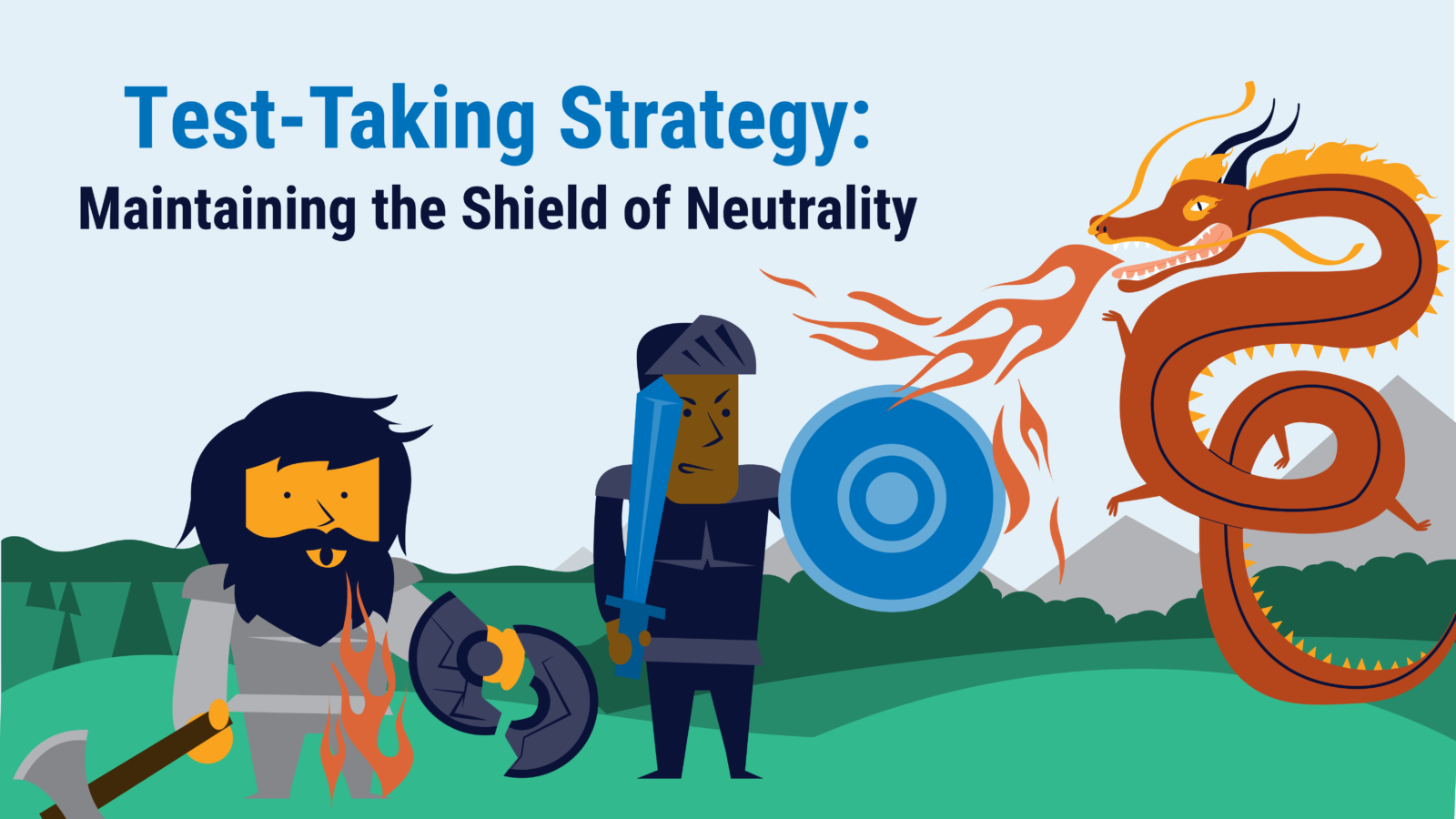Discover the STATMed strategy bad test-takers can use to transform their mindset on test day
Bad test-takers are often blind to losing a neutral mindset when working on questions. Good test-takers, though, maintain a neutral mindset. This means they trust what they know, no matter how limited or fragmented it seems. Then they narrow down the choices and ultimately select the safest remaining option.
We teach our STATMed Boards Test-Takers how to build and maintain what we call the “shield of neutrality.” This strategy helps protect them from self-doubt, twisting, rounding down, or thinking they have to know everything about an answer option.
Here is an example of a medical resident preparing for STEP 3. In our example, she has a history of bad test-taking and has historically compensated by knowing MORE than her peers to offset her testing issues. She is sick of this and wants to learn how to be a good test-taker.
We quickly identify that the shield of neutrality is a big part of her issue. Like most test-takers at this level, she is repeating the same handful of mistakes over and over again. We teach her how to identify and eventually contain and suppress these bad behaviors.
Here is an example of how she misses a PEDS question when her shield of neutrality fails her on a question about sinusitis. She knew more than enough to get this right!
Failed Neutral Read:
- The situation: While she didn’t know everything, she knew more than enough to get it right. Yet she missed it. How did it happen? While several test-taking issues came into play, they’re all tied to her failure to maintain her shield of neutrality.
- So she starts by reading the passage and concluding correctly that the child has sinusitis (the suspected diagnosis). Then she uses the STATMed test-taking process to weigh each answer option one by one, assessing how well each one fits the specific prompt: Which of the following best fits the suspected diagnosis?
- She rules out A, then B, because neither specifically fits and is easily ruled out.
- Then she reads OPTION C: Symptom duration; she doesn’t know this yet, of course, but this is the correct answer.
- She thinks, “We use two weeks—that’s in the passage—to diagnose sinusitis, so this seems like a real possibility….”
- “…but I mean….. I’m not 100% sure this is the BEST thing…I might be wrong, so I don’t know.”
- So then she looks at Option D: Percussion of Sinuses and says, “Tapping on the nose like this tells us about sinuses, so this is possible, so I’ll go with this because I’m not sure about C.
- She missed the question, finds out C is correct, and she says, “I always narrow down to two and miss the wrong one. I wish I could trust my gut!”
Assessment:
- She knew enough to get this question right.
- Ideas of “trusting your gut” are not helpful for bad test-takers since they lack criteria or patterns.
- She missed this question in part because she lost her shield of neutrality and skewed her thoughts on each answer choice.
This is the ideal way to work this question while maintaining the Shield of Neutrality:
- Read the passage and prompt summarized to determine “which of the following best fits the sinusitis:”
- Slash A, B, and E.
- Give C a “maybe” since symptom duration is critical for diagnosing sinusitis.
- Give D a “maybe” since it is associated with sinusitis.
- Use the STATMed “for/against” tie-break strategy to see which option is SAFER and connects what she knows with the specific question asked:
- For C: We don’t usually treat and call “sinusitis” until two weeks, and two weeks is the duration of time clearly delineated in the clinical passage.
- Against C: It is only one part of the diagnosis — I’m not sure it is “best.” Note: While this is something she can question or feel unsure of, it is not enough to rule it out, so she has to maintain her shield of neutrality and not let her fears and doubt and desire to be a binary test-taker (meaning must know an answer is 100% correct to choose it)
- For D: It matches the diagnosis, so this is appealing. NOTE: As she is saying this, she is blurring what the question is asking, and you guessed it, she is losing her neutral read.
- Against D: We could see this elsewhere in other diagnoses, so when you look at it like that, this is not the BEST fit with sinusitis.
Conclusion: Using and trusting the parts of what she knows, C is the safest choice.
She will keep making these mistakes, and she will need to use her STATMed process to analyze. This will replace the negative behavior (failed neutral shield) with positive behaviors (maintaining her Shield of Neutrality).
But it all starts with naming the phenomenon and learning to see it after the fact.
Learn more about how we help with test-taking issues at the medical boards level with 5 Reasons Smart Students and Doctors Fail Medical Boards Exams — and What To Do About It
Show what you know on test day with the STATMed Test-Taking Boards Workshops.
